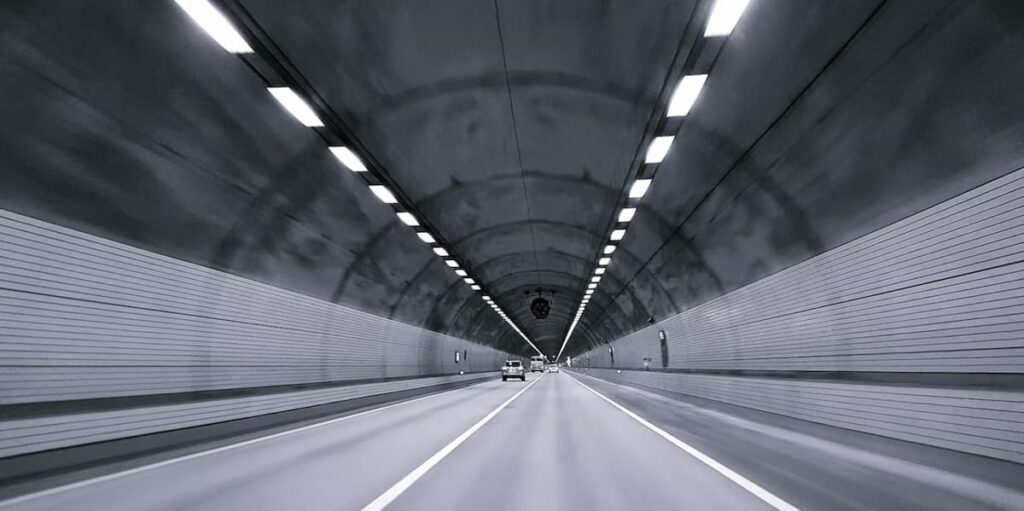
New York City is one of the most fascinating and appealing cities in the world, and it is on the bucket list of millions of people worldwide. However, this makes it known for long traffic hours, as millions of residents, commuters, and visitors attempt to travel in and out of the city daily.
When tourists visit New York, they must see New Jersey and the Hudson River since they sit on the city’s border. However, knowing which route to take and when heading to NJ or coming back from NJ to NYC is essential for a comfortable journey from New Jersey to New York City. So, let’s talk about some bridges and tunnels from New Jersey to New York City.
Bridges and Tunnels from New Jersey to New York City
You can take any of the Bridges and tunnels from New Jersey to New York City discussed below to have a comfortable travel experience from NJ to NYC.
George Washington Bridge
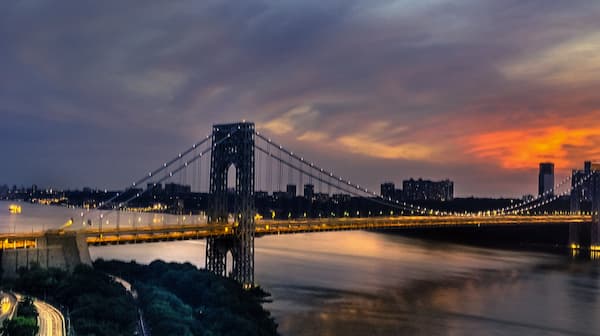
George Washington Bridge spans the renowned Hudson River — its western ends lie in the Palisades of New Jersey, whereas the eastern ends touch Manhattan’s coasts. It was twice the length compared to other suspension bridges and was the masterpiece of its day — regarded as a landmark by many.
Before the idea for what is now known as the George Washington Bridge was created by the mastermind named Othmar Ammann, engineers had struggled for more than a century to cross the river to connect New Jersey to NYC.
This bridge’s design was submitted in 1923, and the authorities selected it above others created by some of the world’s most talented architects since it stood out to them the most. The development of the George Washington Bridge was commenced in 1927 by Port Authority, with Ammann serving as the newly appointed engineer.
Ammann’s innovative and ambitious design was regarded as an engineering masterpiece with a remarkable 3,500-foot central span stretched above two 570-foot steel structures and the endurance to support two levels of roadway or rail.
The bridge’s cash toll for an automobile is $16, whereas car tolls are somewhere between $11.75 to $13.75 for peak and off-peak hours if you pay with a tag transponder like E-Pass NJ or E-Z Pass NY. Travelers could pay these tolls at the toll counters until the end of 2022 when Port Authority crossings went electronic and stopped taking payments for the toll in cash.
Lincoln Tunnel
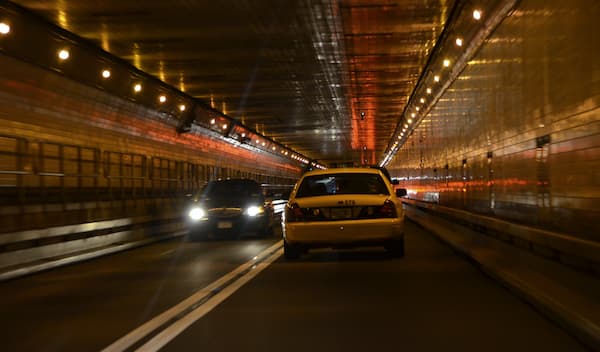
The famed Hudson River runs underneath the 1.5-mile-long Lincoln Tunnel, which links Weehawken and NJ to the western ends of midtown Manhattan. Designed by the civil engineer Ole Singstad, this tunnel is divided into three vehicular tunnels, with two lanes of traffic within every tube.
The middle tube features reversible lanes, whereas the southern and northern tubes only handle eastbound and westbound traffic. It was somewhere between the 1920s to 1930s that the idea of the Lincoln tunnel was proposed.
The construction of the tubes within the tunnel was carried out in phases from 1934 to 1957. Construction northern ends tube began in 1936, and it took till around 1945 to be completed due to the shortage of supplies brought on by the Second World War.
You will no longer be required to pay cash for the toll when traveling through Lincoln Tunnel as port authorities have gone electronic. The authorities have installed overhanging gantries with cameras that will capture a photo of a car with no E-Z Pass, and the owners will be issued a toll charge. In contrast, sensors will electronically recognize the transponders of E-Z Pass owners.
The tolls vary for GWB — the peak hours toll for vehicles with two axles and single rear wheels is $13.75. The off-peak hours are $11.75, and the cash tolls by mail are $16.00.
Holland Tunnel
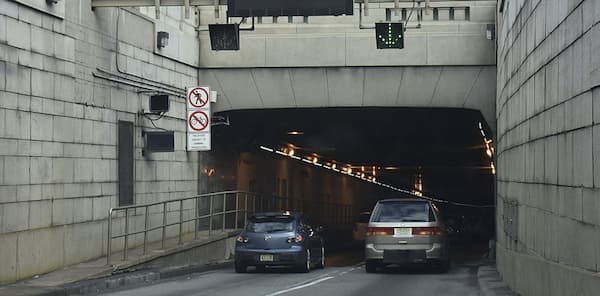
The idea of having a permanent vehicle bridge across the Hudson River was put forward at the beginning of the 1900s. However, disputes made the planning take longer than expected, and it was in 1919 that the authorities approved the plan for a tunnel beneath the river.
The Holland Tunnel’s construction began in 1920 and was completed seven years later. The tunnel was considered the globe’s longest-running underwater vehicle tunnel when it was first opened.
The tunnel comprises two tubes with a combined diameter of 29.5 feet, which are spaced 15 feet apart and roughly parallel to one another beneath the Hudson. The outer surface of every tube comprises a set of cast iron loops made up of fourteen 6 feet long curved steel components. A 19 inches thick concrete layer covers the steel loops.
The busiest times for traffic are 6 to 10 a.m. and 4 to 8 p.m. on weekdays. On weekends, you can expect traffic between 11 to 9 p.m. Tolls for the Holland tunnel vary according to the hours. The peak hours toll for vehicles with two axles and single rear wheels is $13.75. The off-peak hours are $11.75, and the cash tolls by mail are $16.00.
Bayonne Bridge
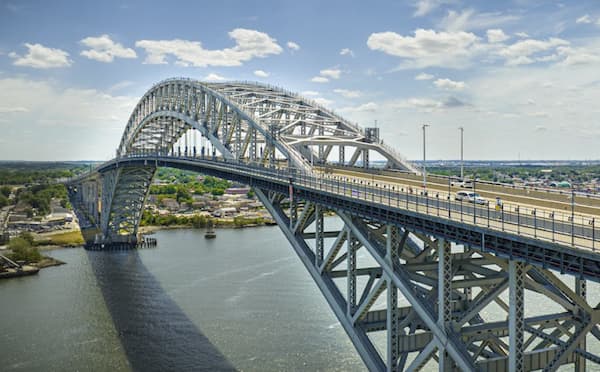
The construction of the Bayonne Bridge was initiated in 1928 and was completed three years later in 1931. Initially set to open in 1932 and cost approximately 16 million dollars, it only took around $13 million to make. In its initial years, the 151-foot-long road included a walkway and two tracks of motorized vehicles going in both directions.
The NJ and NYC port authorities supervised the construction of this structure. The two prominent names behind the bridge’s design were Cass Gilbert, a renowned architect, and Othmar Ammann, an expert in bridge building.
The structure’s arch comprises 40 linear pieces, even though it looks like a parabola. The top chords of the arch rise 325 feet over the canal, while the bottom chord reaches 266 feet. Due to these innovative features, the AISC chose Bayonne to be the most attractive steel bridge structure to begin accepting vehicles in 1931.
Gustav Lindenthal, who has built several notable structures, was a source of inspiration for the steel arch’s architecture. The initial proposal included a decorative sheathing made of granite that would have gone over the steelwork.
However, similar to what happened with GWB (George Washington Bridge), the shortage of resources was due to the Great depression. The outer stone sheath was removed to reduce the expense of the structure, abandoning the design.
Later, new plants, benches, trees, and walkways were added to the toll plaza of the crossing by authorities of Bayonne City in 1951. In 1964, a brand-new toll plaza with an administration office complex was finished at Staten Islands’ end. The Richmond Plaza toll started using a one-way collection of tolls in 1970.
The tolls vary for Bayonne Bridge; the peak hours toll for vehicles with two axles and single rear wheels is $13.75. The off-peak hours are $11.75, and the cash tolls by mail are $16.00.
Goethals Bridge
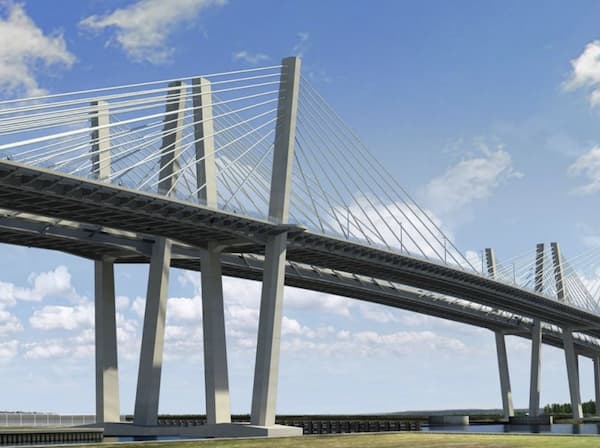
Goethals Bridge links the US states that connect New Jersey, Staten Island, New York, and Elizabeth. This cantilever span was one of the earliest structures the Port Authority constructed. The structure was titled after George Washington, whose last name is Goethals.
Two additional cable-stayed crossovers were authorized in 2013, adjacent to the previous cantilever bridge structure and taking its place. In June 2017, the old eastbound crossing was shut down, and the new one was inaugurated. The new span opened in the first month of 2018, and the previous cantilever structure was demolished in the same month.
The peak hours toll for vehicles traveling through Goethals bridge in vehicles with two axles and single rear wheels is $13.75. The off-peak hours are $11.75, and the cash tolls by mail are $16.00.
Outerbridge Crossing
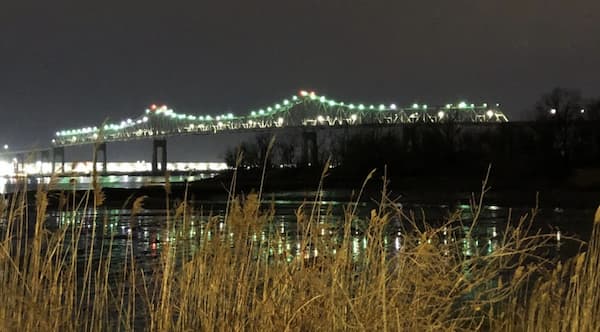
The Outerbridge crossing was constructed to handle the substantially increasing interstate vehicular traffic in the years following WWI. Goethals Bridge and Outerbridge crossing were built with similar designs as part of the initiative to reduce vehicular traffic. Outerbridge’s 143-foot-long channel clearance allows deep-sea boats to transit across the Arthur Kill.
The Goethals Bridge and Outerbridge Crossing were opened to the public on the same day in the middle of 1938. It was then the Port Authority’s first-ever bistate development project. People used to call the bridge Arthur Kill until it was renamed to honor the first head of the Port Authority.
The structure was overseen by New York’s Port Authority when it was constructed. The bridge is the farthest crossover within the port region, connecting New Jersey, Perth Amboy, Staten Island, and Charleston.
The peak hours toll for vehicles traveling through Outerbridge Crossing is $13.75 (for vehicles with two single axles and single rear wheels). The off-peak hours are $11.75, and the cash tolls by mail are $16.00.
Concluding Thoughts
Now that you know all the bridges and tunnels from New Jersey to New York City, you can choose the most convenient for your travels. No matter your structure, you will enjoy some of the most spectacular views during your drive. If you want to avoid getting stuck in traffic, try to begin your journey during the non-peak hours when the tolls are also lower.
